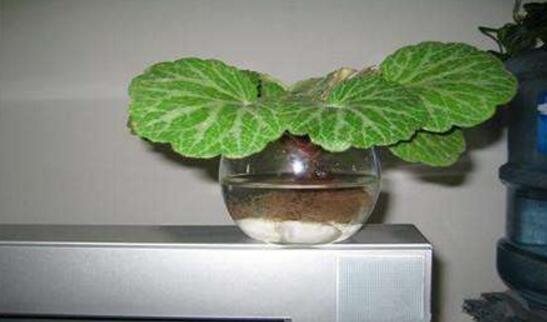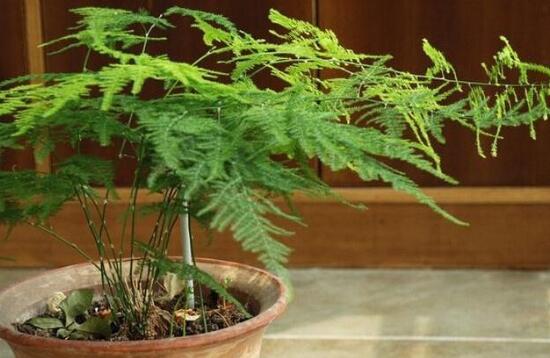Is Platycodon grandiflorum poisonous? can Platycodon grandiflorum be put in the bedroom / non-toxic / purifying air
Platycodon grandiflorum is a highly ornamental flower, so many people want to raise this plant at home, but many plants are toxic, which we need to know before breeding. Is Platycodon grandiflorum toxic? can Platycodon grandiflorum be put in the bedroom? Next, the editor will take you to learn about it.

Is Platycodon grandiflorum poisonous / non-toxic
On the question of whether Platycodon grandiflorum is poisonous, the answer is no. Although most plants of Gentianaceae are toxic to a certain extent, Platycodon grandiflorum is an exception. It is not only non-toxic, but also has many benefits in indoor culture. As for what it is, let's move on.
Can I put Platycodon grandiflorum in the bedroom?
For whether Platycodon grandiflorum can be put in the bedroom, the answer is yes, not only non-toxic, but also has a lot of benefits. Platycodon grandiflorum this plant is a natural air purifier, it can absorb the harmful substances left in the air, so that the air in the bedroom becomes more fresh, and itself has a certain ornamental, it is also a good choice to put it in the bedroom as a decoration.
III. Requirements for breeding in bedrooms of Platycodon grandiflorum
1. Growing environment
When raising Platycodon grandiflorum in the bedroom, we must pay attention to ventilation, if it is not ventilated for a long time, it is easy to lead to some diseases and insect pests, so we should pay attention to this. And it is best to keep the indoor temperature at 15-28 °C, which will also be beneficial to its growth.
two。 Lighting requirement
In the growth process of Platycodon grandiflorum, light is very important, if you choose to raise it in the bedroom, it is best to move it outside for a few hours of light at noon every day, so that it can grow better.
3. Watering requirement
When raising Platycodon grandiflorum in the bedroom, there is no big difference between watering requirements and outdoor breeding. As for the specific amount of water and matters needing attention, you can refer to the breeding methods of Platycodon grandiflorum. Here, the editor does not introduce too much.
Can Platycodon grandiflorum be put in the bedroom? Platycodon grandiflorum can be kept for several years.
The so-called Platycodon grandiflorum is a variety of Platycodon grandiflorum produced abroad. At present, it is widely distributed in our country, because of its high ornamental value, so many people like to plant some at home. So before planting Platycodon grandiflorum, many people must want to have an in-depth understanding of it.
Can I put Platycodon grandiflorum in the bedroom?
Platycodon grandiflorum belongs to Gentianaceae. Gentianaceae plants are more or less poisonous. For example, the root of Platycodon grandiflorum, which also belongs to Gentianaceae, is poisonous. It contains Platycodon grandiflorum saponins, which is a strong hemolytic ingredient. Fortunately, Platycodon grandiflorum is non-toxic, and the whole body is non-toxic, whether it is accidental ingestion or long-term contact with him will not cause any problems, it can be said to be a very close plant. Therefore, there is no problem with keeping it indoors.
Platycodon grandiflorum can be kept for several years.
It mainly depends on the personal breeding method, some die after a few months, while others are still very good after three years. As long as Platycodon grandiflorum is not cut off and planted well, its flowers can be seen every year, and there is no need to sow and plant every year.
Culture methods of Platycodon grandiflorum
1. Temperature. The suitable growth temperature of Platycodon grandiflorum is 15 ℃-28 ℃. It can endure the low temperature of 0 ℃ for a short time, and the night temperature can not be lower than 12 ℃ during the growing period. If the winter temperature is lower than 5 ℃, the leaves of Platycodon grandiflorum will become rosette and can not blossom. If the summer temperature is higher than 30 ℃, the flowering time of Platycodon grandiflorum will be shortened.
2. Platycodon grandiflorum likes the humid environment, but too much water will damage the roots of Platycodon grandiflorum, and it is easy to get sick. Too little water will weaken the growth of the plant and advance the flowering period. Therefore, watering should be appropriate, not over-watering.
3. Light. Platycodon grandiflorum likes a warm, well-lit environment. Long-term light is conducive to stem and leaf growth and flower bud growth, so it is best to keep 16 hours of light every day.
4. Soil. Platycodon grandiflorum likes fertile and loose soil with good drainage, and it is best to choose improved garden soil with the addition of peat soil, rice bran and a small amount of lime.
Matters needing attention in Culture of Platycodon grandiflorum
1. The suitable temperature for the growth of Platycodon grandiflorum is 1528 ℃, and the night temperature during the growing period is not lower than 12 ℃. When the winter temperature is below 5 ℃, the leaves are rosette and can not blossom. It can also withstand 0 ℃ low temperature for a short time. When the temperature in the growing period exceeded 30 ℃, the flowering period was obviously shortened.
2. Citrus pedicel flowers have strict requirements for water. Although Platycodon grandiflorum likes wet environment, excessive water is disadvantageous to the root growth of Platycodon grandiflorum and is vulnerable to diseases. After bud formation, high temperature and humidity should be avoided, otherwise it is easy to cause fungal diseases. At the same time, during the growing period, there was insufficient water supply, weak growth of stems and leaves, and early flowering. Therefore, the cultivation of Platycodon grandiflorum in Israel and drip irrigation facilities are very beneficial to the growth and development of Platycodon grandiflorum.
3. Tangerine pedicel flowers are sensitive to light. Long-day light is very beneficial to the growth and development of Platycodon grandiflorum, which is helpful to the growth of stems and leaves and the formation of flower buds.
4. Tangerine pedicel flowers require fertile, loose and well-drained soil. Don't keep cropping. The pot soil must be sterilized, and the soil can be treated with high temperature steam or methanol bromide.
5. Citrus pedicel flowers are commonly used for sowing and propagation. The indoor pot sowing is mainly from September to October or January to February. The seeds of Platycodon grandiflorum flowers are small, with 22000 seeds per gram, the germination rate is 80% and 85%, and the optimum temperature for germination is 22 ℃. Platycodon grandiflorum is a light-loving seed, which is not covered with soil after sowing, but only needs to be pressed gently. Before sowing, basin soil and containers should be strictly sterilized at high temperature. It germinated 10-14 days after sowing, and the seedlings were planted once within 10 days after germination.
Platycodon grandiflorum is a five-poisonous plant, so it is very good to keep it at home, and putting it in the bedroom does not have any bad effect on the human body. Platycodon grandiflorum is not an annual plant and can be raised for several years, but this requires technology, so as long as you master the technology of raising it, Platycodon grandiflorum can be raised very well.
What is the flower language of Platycodon grandiflorum, the legend of Platycodon grandiflorum / sincere and unchanging love
Platycodon grandiflorum is a common flower in people's life, with a very elegant temperament, so it is loved by many people. Like most plants, it has its own flower language. What is the flower language of Platycodon grandiflorum and what are the legends of Platycodon grandiflorum? Next, the editor will take you to learn about it.
What is the tangerine pedicel flower language / sincere and unchanging love
The flower words about Platycodon grandiflorum generally represent sincere and constant love, pure, innocent, beautiful, touching, and full of emotion. The appearance of Platycodon grandiflorum is relatively delicate, giving people a feeling that they want to take good care of them.
Second, the legend of Platycodon grandiflorum
In a small mountain village a long time ago, there was a pair of men and women who loved each other. The woman was called Platycodon grandiflorum. She and the man grew up together. They were childhood sweethearts, and they both loved each other very much. However, one day the boy said that he was going to learn magic in the distance and asked him to wait for him. But the man never returned and never came back, but he did not give up and waited for the man to return. Only one day the girl should become a flower and grow at the entrance of the village and wait forever.
Introduction of Platycodon grandiflorum
1. Appearance introduction
Platycodon grandiflorum is a very rich flower, the flower shape is very unique, has a fresh and elegant temperament, has the role of beautifying the environment, originated in North America, and only gradually spread to Asia in the 1960s. With decades of development, Platycodon grandiflorum has become a common plant in people's life, and it is grown in many people's homes.
two。 Introduction of culture methods
Platycodon grandiflorum is a warm plant, so it is necessary to keep enough light in the breeding process and the environment must be ventilated. Of course, watering, fertilization is also essential, as for the specific details, you can refer to the culture method of Platycodon grandiflorum, in which you can find the answer.
Fourth, different colors of Platycodon grandiflorum flower language
1. White Platycodon grandiflorum flower language: purity
two。 Pink Platycodon grandiflorum flower language: innocent
3. Purple Platycodon grandiflorum flower language: full of emotion
4. Green Platycodon grandiflorum flower words: moved
- Prev

Can Saxifraga be hydroponized? hydroponic methods and precautions / frequently changing water of Saxifraga
Saxifraga can adapt to many kinds of environment, so it is considered to be one of the best plants to raise. In addition to potted plants, some people want to grow it by hydroponics, so can Saxifraga be hydroponically cultivated? The answer is yes, but before that, we should understand the hydroponic culture methods and precautions of Saxifraga.
- Next

How to raise asparagus, the breeding methods and points for attention / need to learn 5 tricks
As a highly ornamental plant, the function and efficacy of asparagus are well known by more and more people. Many people try to raise some asparagus at home, but they don't know how to raise asparagus. Today, the editor will bring you detailed methods and points for attention.
Related
- Fuxing push coffee new agricultural production and marketing class: lack of small-scale processing plants
- Jujube rice field leisure farm deep ploughing Yilan for five years to create a space for organic food and play
- Nongyu Farm-A trial of organic papaya for brave women with advanced technology
- Four points for attention in the prevention and control of diseases and insect pests of edible fungi
- How to add nutrient solution to Edible Fungi
- Is there any good way to control edible fungus mites?
- Open Inoculation Technology of Edible Fungi
- Is there any clever way to use fertilizer for edible fungus in winter?
- What agents are used to kill the pathogens of edible fungi in the mushroom shed?
- Rapid drying of Edible Fungi

